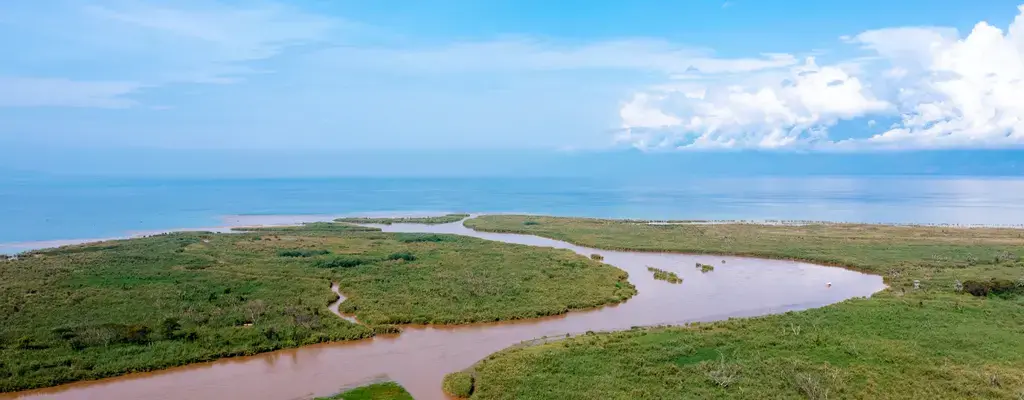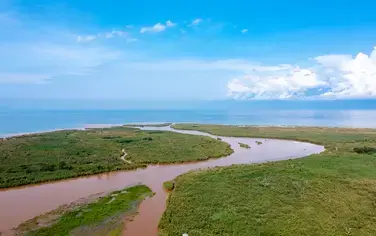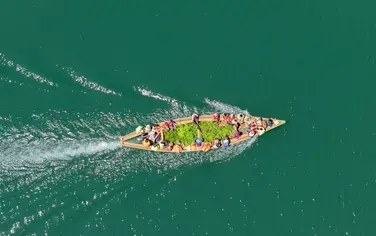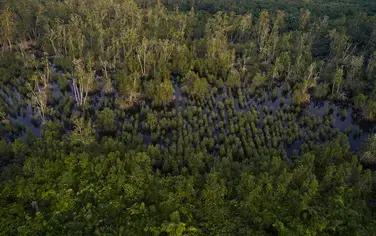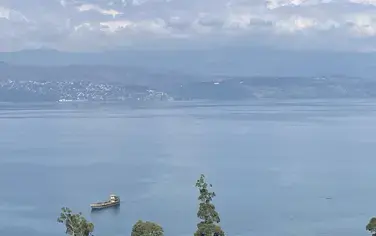By Jaffar Rusigaje, Justin Murhula, Gilbert Muvunankiko, Mercy Orengo | Cover Image: Amizero Pictures/ WRI
Landscape restoration is a complex endeavor. It requires strong collaboration and complementarity to overcome these challenges and deliver high-quality outcomes.
In Bujumbura, Burundi, government officials, local leaders, and environmental experts came together to chart a shared path for restoring the Rusizi River basin — a critical lifeline for millions. The gathering aimed to strengthen coordination among stakeholders working to bring life back to the degraded landscape, which plays a key role in the region’s food, water, and climate resilience.
Convened by the National Ministry of the Environment in partnership with World Resources Institute (WRI), the two day meeting drew nearly 40 national and international organizations to the Club du Lac Tanganyika Hotel in Bujumbura from April 24 to 25, 2025.
"This meeting is crucial for Burundi. It's time for all efforts to be coordinated for tangible and lasting results," said Ininahazwa Pacifique of the Burundian Office for Environmental Protection (OBPE) and head of the Rusizi National Park.
The Upper Rusizi watershed is home to diverse landscapes facing ecological challenges such as land degradation, biodiversity loss, and climate vulnerability. Strengthening coordination among local stakeholders is essential to ensure restoration activities align with ecological needs and government priorities.
The Director General of Environment, Water Resources, and Sanitation, Nimubona Christian, expressed gratitude to WRI for organizing the workshop.
"We are pleased with this workshop. It helps us understand who is working where and on what. There are many stakeholders in this basin, but the results are not very visible. Regular sessions will ensure proper channeling of support," he said.
Burundi has many watersheds requiring similar mapping efforts. This meeting provided a framework for mapping current and future landscape restoration interventions, sharing data, and strengthening governance for successful restoration.
Joseph, Director of Water and Forestry, emphasized the importance of mapping all of Burundi’s watersheds and bringing stakeholders together for effective coordination. "We will do the same for the Kagera Basin, where coordination is not yet structured," he noted.
The main objective of the meeting was to establish a solid framework for collaboration and coordination among public, private, and civil society stakeholders to advance forest landscape restoration (FLR) in the Rusizi watershed. It also aimed to officially establish the FLR Multi-Stakeholder Platform (MSP), a space for collective engagement and information sharing.
"This meeting will improve coordination and align restoration interventions with national priorities and international commitments," said Engineer Dodiko Prosper, Minister of Environment, Agriculture, and Livestock.
This stakeholder meeting in Bujumbura marked a significant step towards revitalizing the Rusizi River basin. By fostering collaboration among national and international organizations, Burundi is poised to tackle the ecological challenges facing this critical landscape. The establishment of the FLR Multi-Stakeholder Platform (MSP) promises improved coordination and alignment of restoration efforts with national and international priorities. As these collaborative efforts continue, the hope for a restored and thriving Rusizi basin becomes increasingly tangible, benefiting millions of Burundians and setting a precedent for future restoration projects across the country.
